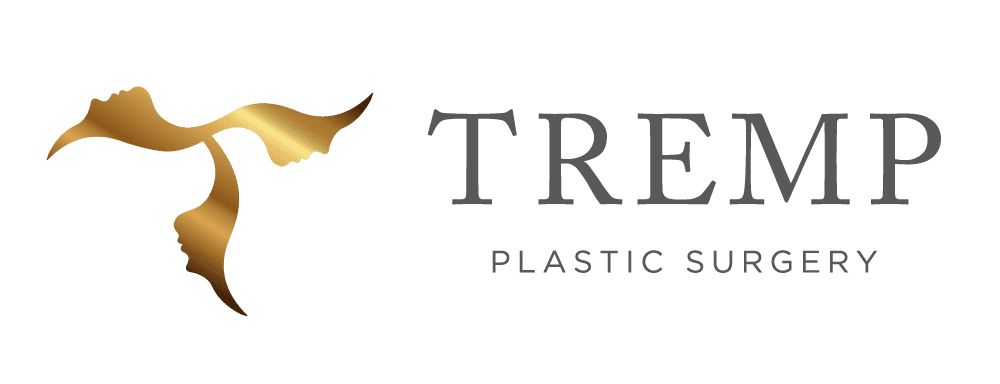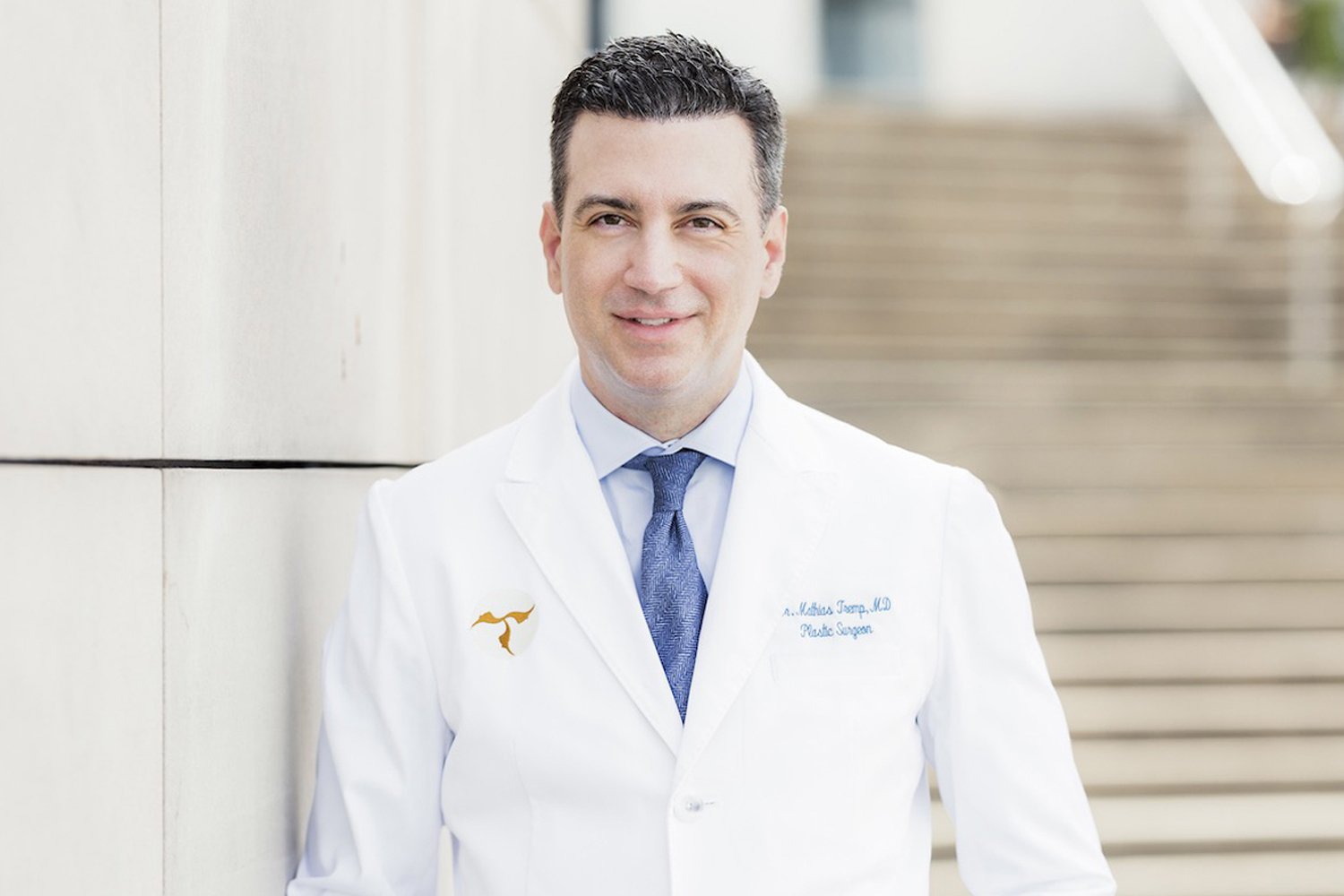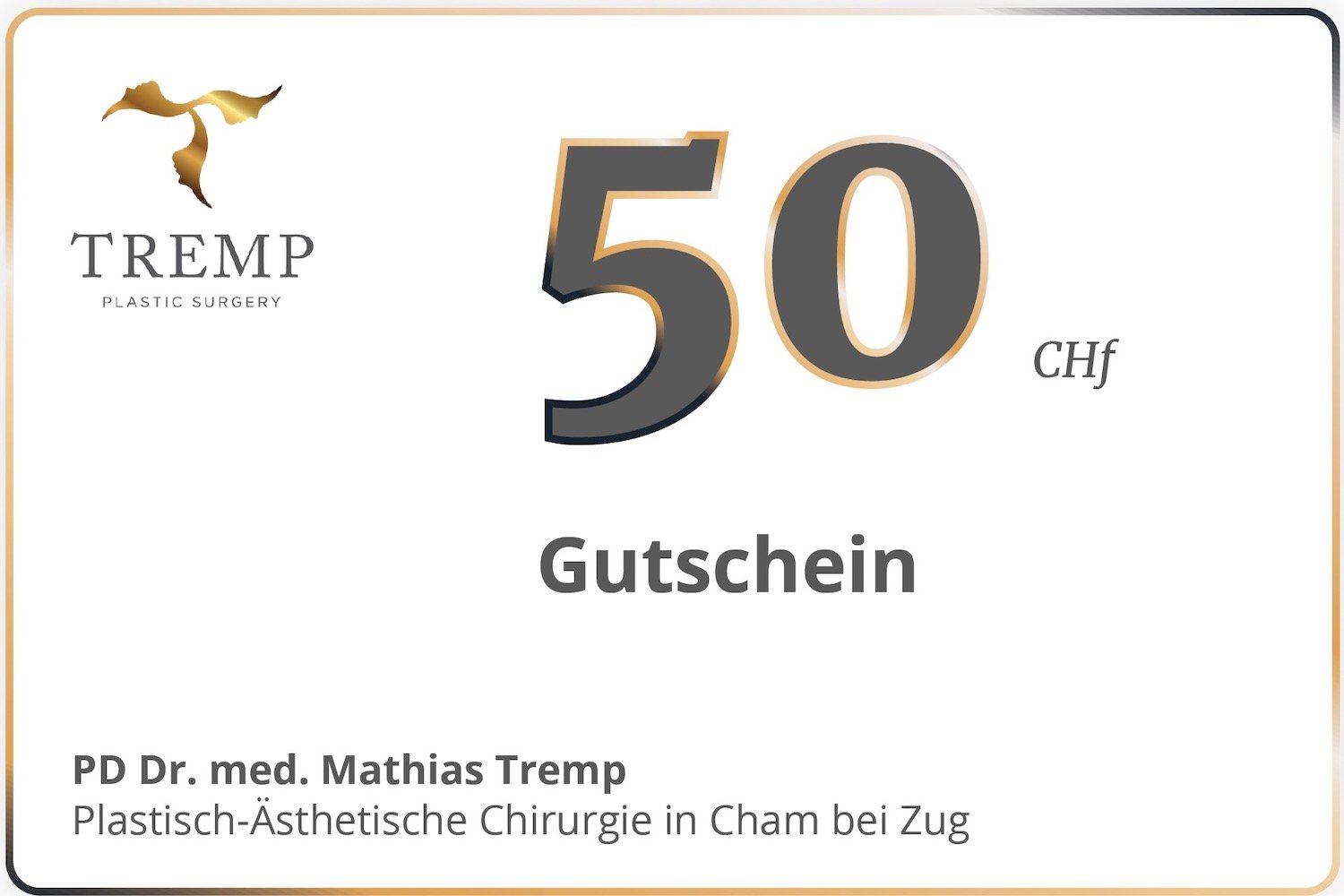- About
- Face & Skin
- Cellulite treatment
- Excessive sweating in women and men
- Facial and skin treatments
- Facial Surgery
- Hydrafacial treatment
- IV drips (vitamin infusions)
- Laser treatment
- Lip Lift
- Mesotherapy (skin structure )
- Special Offers by TREMP PLASTIC SURGERY
- Treatments with Skin Ceuticals
- Wrinkle and facial treatments with botulinum
- Wrinkle and facial treatments with filler
- Face
- Breast
- Body
- Offers
- Blog
- Contact
- EN
- DE

Naturally full breasts for self-confidence
There are different ideals for a beautiful breast, just as there are different breast shapes and sizes. Many women are dissatisfied with a breast that is too small for aesthetic reasons. The best result for a well-shaped female breast is achieved by breast augmentation with implants.
Our comprehensive treatment concept combines innovative technologies with proven methods to effectively rejuvenate and care for your skin.
Make someone special happy and give them a gift certificate for a consultation with PD Dr. Tremp.
Aesthetic breast corrections? Before and after pictures
 After
After  Before
Before Drag
Do you have any questions?
Arrange a consultation with PD Dr. Mathias Tremp

PD Dr. med. Mathias Tremp in a consultation
Before any procedure, it is crucial that you as a patient are fully informed. PD Dr. Tremp is ready to answer your questions and inform you about the benefits and risks of the operation.
Find out whether your desired operation is possible. Arrange your personal consultation appointment now.
Before breast augmentation
The control of medical conditions is of central importance for a successful breastaugmentation. It is important to recognize risks and personal circumstances in order to ensure a safe surgical procedure. A detailed consultation is very important before breast augmentation. All the steps will be explained to you and you can discuss your questions and concerns directly with the doctor.
Why was the form given to me?
We ask all patients receiving outpatient or inpatient hospital treatment in Switzerland to complete a consent form for the "Further use of health-related data and samples for research purposes" - often referred to as a general consent form. For children under the age of 14, parents give their consent, while adolescents aged 14 and over can decide for themselves whether to participate.
Please note that your decision whether or not to consent has no influence on the quality of your medical treatment and care in our hospital. It is important to us that you make a conscious decision and that this is documented.
What does consent mean for me?
During an outpatient or inpatient hospital stay, samples (urine, blood, tissue) are taken for diagnostic or treatment purposes. These are normally disposed of in the laboratory after analysis. If the consent form is signed with "Yes",
The remaining samples and relevant medical data (such as age and examination results) are released for medical research projects within our hospital. This enables our researchers to gain important insights that can contribute to improving diagnosis and treatment methods.
Please grant our hospital permission to use both existing and future data and samples for medical research projects. This regulation applies equally to your medical data and samples taken.
Allows us to share data and samples for collaborations with other institutions - including other hospitals, universities and pharmaceutical companies - while always adhering to the strictest data protection standards.
How is data protection guaranteed?
Data protection is a top priority for us. Data is treated in strict confidence in accordance with the Swiss Data Protection Act. Only authorized persons are permitted to view them. These persons are either involved in your treatment or the ethics committee has given them permission to do so (e.g. study physicians, study coordinators). The data will also be encrypted. Encryption means that so-called encryption codes are used instead of personal details (surname, first name, date of birth or AHV number). These are numbers and/or letters (e.g. als850 or ZG0002, etc.). This means that nobody can trace your personal details.
How can I withdraw my consent?
Your consent is voluntary and can be revoked at any time without giving reasons. To do so, we simply require a newly completed form with the new decision.
High-quality silicone implants: Drop-shaped or round forms

Choosing the right type of implant is important for a good breast augmentation result. There are round and teardrop-shaped implants that look like the natural breast. There is no limit to the size of the breast. If necessary, special implants can be used for very large breasts. Patients can try out different implants in different sizes in their bra to get their bearings.
Cutting guide
Various things are taken into account when inserting the implant. The approach can be made in the skin fold under the breast, around the nipple or in the armpit. The choice of access depends on the breast anatomy and the patient’s wishes. The technique is adapted accordingly.
Access via the inframammary fold (underbust)
Access in the breast crease is the standard for breast augmentation. A 3-4 cm incision allows optimal access and facilitates the insertion of the implant. The breast can be easily shaped and the ability to breastfeed is maintained.
The length of the incision depends on the size and consistency of the implant. With a hybrid method, the incision can be even smaller. With a clean incision and suturing technique, an aesthetically unobtrusive scar result can be achieved.
Access via the axilla (axillary)
Access via the armpit is suitable for a "scar-free" breast augmentation. The procedure is performed endoscopically, which allows for an elegant result, even with larger implants.
Usually, the implant is placed under the muscle. This method is suitable for smaller implants without a breast lift and does not leave any visible scars on the breast.
Access via the nipple (periareolar)
Access via the nipple is used less frequently. It is well suited for adjustments or reductions of the areolas. The scar is less visible due to the darker skin pigmentation. However, access is limited to smaller implants and there is an increased risk of infection and possible limitations in the ability to breastfeed. Access via the nipple is useful for tightening and repositioning of the areolas. However, for larger implants and safe procedures, access via the breast fold or armpit is preferred.
Placement: Above or below the pectoral muscle
There are two methods of placing the implant: above or below the pectoral muscle. Implants under the muscle reduce the risk of capsular contracture. This method also creates a more natural breast shape and feel. The choice of method depends on the anatomical nature of the breast.
Between mammary gland and pectoral muscle (subglandular)
The positioning of the implant under the pectoral muscle allows for rapid healing with little pain. The procedure can theoretically be performed in twilight sleep and is often outpatient. When placed over the pectoral muscle, larger implants can be used and positioning is easier.
Under the pectoral muscle (submuscular)
Implants under the pectoral muscle are non-slip, but the healing process takes longer. Excessive muscle tension can lead to breast deformities. The pain after surgery is more severe than with implants between the mammary gland and the pectoral muscle. The result is usually more natural and the risk of capsular contracture is lower compared to placement over the muscle.
Autologous fat: a natural alternative to silicone implants
Lipofilling is an alternative to breast implants. It is ideal for compensating for asymmetrical breasts or minor corrections to the breasts. No incisions are required, only small punctures that are later visible.
The filling material is taken from the patient’s own fat deposits on the abdomen, hips or thighs. After the treatment, the liposuctioned fat is compacted and then injected into the breast using special cannulas. Please note, however, that this method is less suitable if a large breast volume is desired.
Breast augmentation procedure
Breast augmentation surgery combines anesthesia (twilight sleep or general anesthesia) and surgical precision to achieve the desired aesthetic result.
The incision and placement of the implant play a crucial role in maintaining the natural appearance and fulfilling the patient’s individual wishes. The whole process is a deliberate act of art combined with advanced medicine aimed at improving self-confidence and attitude towards life
Anesthesia and duration of surgery
The choice of anesthesia can affect the duration of the operation. While general anesthesia assures you of complete freedom from pain throughout the procedure, it can also cause the surgery time to be extended.
The best type of anesthesia for your breast augmentation depends on several factors, including your health history, your pain tolerance, and, of course, your personal preference. It is important to discuss this point in detail in your preliminary interview.
Incision and implant placement
The incision and implant placement in breast augmentation are crucial for the appearance and recovery time. They affect scarring, comfort and the natural look of the breast. Discuss these aspects in detail during your consultation in Cham.
After the treatment (breast augmentation)
Pain can occur after breast augmentation, but this can be easily treated with painkillers. Our team will give you painkillers and clear care instructions. Recovery time varies, but you will need to rest and wear a support bra. You can gradually return to normal activities and we will guide you to minimize the risk of complications.
Pain after breast augmentation
The sensation of pain after breast augmentation is individual. The degree of swelling, bruising and pain varies greatly. A feeling of tension after breast augmentation is one of the regular side effects.
The pain depends on the choice of surgical technique and the surgical approach. The patient's physical condition is another factor.
In most cases, the pain is perceived as a strong feeling of pressure and tension, comparable to severe muscle soreness. A preventive medication against the pain for a few days after the operation is common.
The first days and weeks after the operation are crucial for the final result. The patient can do a lot to help the new breast take the desired shape.
Pain management and care instructions
Postoperative pain may occur after breast augmentation. The key is to routinely take the prescribed painkillers, followed by a gentle massage to reduce swelling and promote circulation.
An important aspect of post-surgery care is cleanliness; careful cleaning prevents infections. You should also wear comfortable, supportive bras that support the healing process and provide comfort.
Wearing a support bra
A support bra is crucial after breast augmentation. It holds the implants in place, reduces complications and promotes healing. Choose a tight-fitting bra that provides good support for the implants. Medical professionals will help with the selection. Wear the support bra for at least six weeks. After that, in consultation with the doctor, you can switch to a normal bra, but the support function remains important.
Return to normal activity
After one week you can return to your normal daily routine. Sports activities are permitted again after 6 weeks. It is important that the healing process is guaranteed, especially in the first week, and that you are relieved accordingly.
Risks and complications
When minimizing the risk of blood clots after breast augmentation, it is essential to follow the instructions carefully. Pay particular attention to sufficient exercise and a healthy diet to promote blood circulation.
What are the risks of breast augmentation?
Breast augmentation carries risks such as capsular fibrosis, infections and asymmetrical breasts. Capsular fibrosis may require repeat surgery. Infections are rare, but if the implant is affected, it is unfortunately often necessary to remove the implant and reinsert the new implant after 6 months at the earliest.
Complications from breast augmentation?
Breast augmentation has potential complications such as capsular contracture, infection and bleeding. Capsular contracture can lead to pain and deformation and may require additional surgery. Infections often require implant removal and antibiotic treatment. Bleeding can lead to swelling and pain and may require further surgery.
Recognizing signs of complications
After breast augmentation, it is important to detect possible complications at an early stage. Look for changes such as hardening, signs of infection, or changes in the shape and size of the breasts. Perform regular self-examinations and consult your doctor immediately if there are any signs of a complication.
Special care after breast augmentation
Special aftercare is important following breast augmentation. Follow the instructions for scar care, swelling reduction and pressure avoidance. Arrange regular follow-up examinations to monitor the healing process.
Long-term care
In order to maintain skin elasticity after breast augmentation, regular care is important. This includes a healthy diet, drinking enough fluids, and special skin care products.
Regular mammograms are crucial to detect changes or complications early and ensure breast health.
Implant Checks and Replacement
Breast implants have a limited lifespan and must be replaced over time depending on the symptoms and breast shape. An implant change may also be necessary due to changes in the body or aesthetic wishes of the patient, e.g. breast ptosis (sagging) or the desire for a different implant size.
It is recommended to have a magnetic resonance imaging (MRI) scan every 5 years after breast augmentation with silicone implants and an ultrasound scan every 2 years thereafter. This examination helps to detect a possible implant rupture at an early stage and enables proactive treatment.
Long-term care and maintenance
Long-term care and maintenance after breast augmentation is in the hands of the patient. Regular visits to the surgeon are important to monitor progress, detect potential complications, and ensure long-term success.
Costs for a breast enlargement
The cost of breast augmentation with implant is discussed in detail with the patient. They are made up of various factors such as surgery, anesthesia, hospitalization, implants, and aftercare. Additional costs may apply for medication or special bras (sports bra and breast girdle).
As a rule, health insurance does not cover the cost of breast augmentation, as it is an aesthetic procedure. However, there are exceptions in which the costs are partially or fully covered by health insurance, e.g. in the case of congenital malformations or after a mastectomy.



